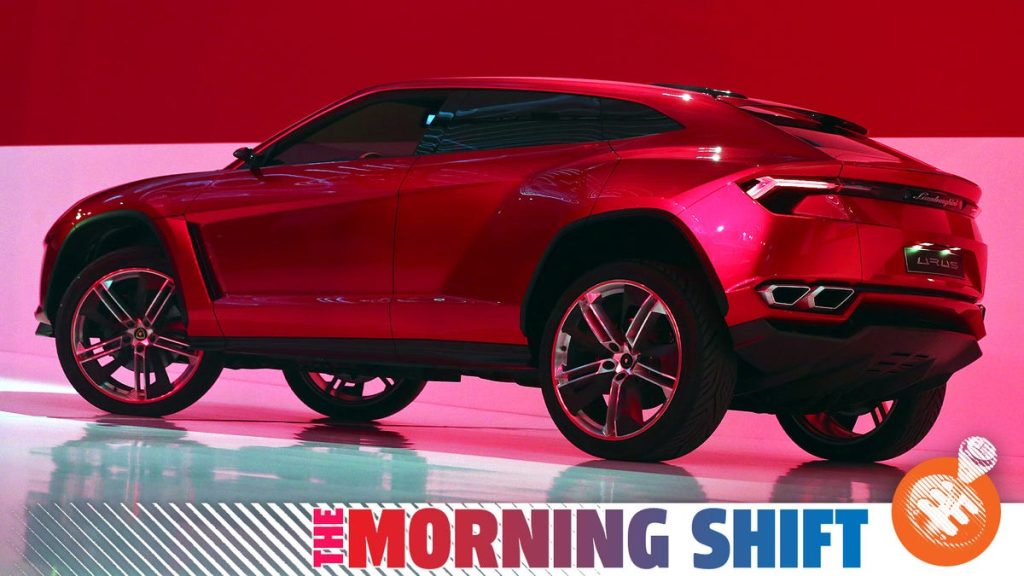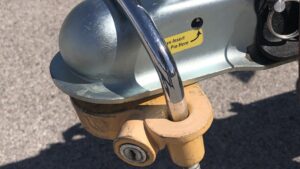Hyper-Luxury and Supercar Makers are Having a Time and Raking it in

The wheels on the original 2013 Lamborghini Urus concept can’t hurt you, no matter how threatening they look.Photo: Alexander Hassenstein (Getty Images)
Rich folk bought Lamborghinis while the rest of us learned to knit, Nissan is mulling over an additional third U.S. plant with renewed confidence and Tesla won’t crack India, for now. All that and more in this Friday the 13th edition of The Morning Shift for May 13, 2022.
1st Gear: Even Bentley Sales are up
We often hear about mainstream automakers producing vehicles at scale, like Toyota, shattering sales records in spite of the ongoing supply chain shortages. But some makers of ultra high-end vehicles are enjoying unprecedented success too, according to Automotive News.
Rolls-Royce and Bentley are coming off record sales in 2021 and on pace for more gains in 2022.
Those two companies — along with Tesla, BMW, Mini and Genesis — were the only brands to post higher U.S. sales in the first quarter.
Alan Haig, president of Haig Partners, a dealership buy-sell advisory firm, said combined U.S. sales at seven exotic and ultraluxury brands — Lamborghini, Maserati, Bentley, Rolls-Royce, Ferrari, McLaren and Aston Martin — jumped 5 percent from 2018 to 2021.
“The market is far less volatile and more lucrative today because of the rise in affluent households,” Haig said. “And the manufacturers are responding with new product and higher prices.”
While many people attempted to learn new languages, take up archery and not get gravely ill in those peak isolation months when traveling was inadvisable, rich people bought fancy cars.
Steady gains in real estate values and on Wall Street in recent years have further padded household wealth.
Affluent households had more time and fewer opportunities to splurge on travel and dining out during the pandemic.
Spending increased on goods of all types, including ultraluxury SUVs and cars.
Lamborghini, Bentley, Rolls-Royce and Aston Martin have seized this moment, but American sales aren’t up for all exotic brands — or, at least, not for the same reason. Lotus’ 2021 looks way better than its 2020 did because the company actually started taking orders for a new model last year, and the Elise and Exige died on this side of the Atlantic a decade ago. Ferrari sold about 200 fewer cars in the States in 2021 relative to three years earlier, and McLaren and Maserati found themselves down on previous performance by a sizable margin.
To end on an apt quote from a dealership group owner quoted in Auto News’ piece: “at the core of our business right now is an old axiom. If you tell Americans they can’t have something, they have to have it.”
2nd Gear: Nissan’s Finding Itself
Yesterday we shared the news that Nissan is profitable again for the first time in three years. It’s also looking to expand U.S. production with a focus on EVs. Everyone’s interested in doing that, of course, but few have been at the EV game as long as Nissan. From Automotive News:
Chief Operating Officer Ashwani Gupta said the Japanese automaker would likely need a new factory by the end of the decade under its Ambition 2030 long-term plan.
Gupta did not specify that the new facility would be geared exclusively toward EVs, but the context of his discussion revolved around EVs.
“The way we are progressing, I do believe we will need a new plant,” Gupta said on Friday at Nissan’s global headquarters here.
He said the move fits with the trend toward localization as Nissan makes electrification a focal point of future growth.
Last November, Nissan said it will invest 2 trillion yen ($16.4 billion) in the next five years to amp up an electrified vehicle push with 23 new entries worldwide by the end of the decade while the company derives 40 percent of U.S. sales from pure electrics.
It’s about damn time. The company has been building Leafs for longer than Tesla’s been pumping out sedans, and yet, it’s allowed everyone else — especially Volkswagen — to profit from the EV-positive narrative. Now, Nissan’s obviously had a rough few years of it, but you’ve got to wonder that if you’re the first to do something and not constantly reminding everyone of that fact, you’re failing as a marketing enterprise. Evidently, Nissan’s decided to stop leaving money on the table.
3rd Gear: India Spurns Tesla, for now
Speaking of Tesla, its plans of expansion in India have been stymied due to tariffs, Reuters reports.
Tesla Inc has put on hold plans to sell electric cars in India, abandoned a search for showroom space and reassigned some of its domestic team after failing to secure lower import taxes, three people familiar with the matter told Reuters.
The decision caps more than a year of deadlocked talks with government representatives as Tesla sought to first test demand by selling electric vehicles (EVs) imported from production hubs in the United States and China, at lower tariffs.
But the Indian government is pushing Tesla to commit to manufacturing locally before it will lower tariffs, which can run as high as 100% on imported vehicles.
Tesla had set itself a deadline of Feb. 1, the day India unveils its budget and announces tax changes, to see if its lobbying brought a result, the sources with knowledge of the company’s plan told Reuters.
When Prime Minister Narendra Modi’s government did not offer a concession, Tesla put on hold the plans to import cars into India, added the sources, who sought anonymity because the deliberations were private.
For now, Tesla has lost this game of chicken with the Indian government, expecting special treatment and getting nothing. That’s not to say it won’t and could never regroup, return and break into the market, but India’s sticking hard to its guns here — and you can’t say it didn’t give Tesla ample warning.
4th Gear: Everyone’s Doing it so why Can’t Porsche?
In February Volkswagen publicized a plan to list Porsche, the automaker it owns, by the fourth quarter of the year. Today, the Porsche holding company which owns Volkswagen — different Porsche — cryptically pumped the brakes on that plan for an initial public offering, citing “a large number of different influencing factors.”
“We are working on financing plans in order to be robust in different valuation scenarios for an IPO (initial public offering),” Porsche SE chairman Hans-Dieter Poetsch said.
“The actual feasibility of the IPO depends on a large number of different influencing factors… final decisions have not yet been made.”
If you ask Volkswagen CEO Herbert Diess, however, now is the time for a Porsche IPO. VW is going brand-heavy these days after all, and for names like Porsche that already enjoy plenty of caché but also deal in luxury EVs, it seems like a surefire way to maximize that inherent potential. It’ll likely happen eventually, but maybe Volkswagen’s spoken a little too soon.
5th Gear: More of you Should’ve Bought 4C Spiders
I mean, that’s my takeaway from this interview between Alfa Romeo’s North American chief Larry Dominique and Carscoops, where Dominique hedges his outlook on the prospect of a new halo car for the company:
“A halo model is important to the brand and is likely in addition to the core models,” he told us. “But what we do and how often we do it could vary. We could do a very limited edition super sports car or we could do a modest volume Spider replacement.”
What seems less likely is that Alfa would take another shot at something in between that was technically advanced but sold in very small numbers, and for a relatively ordinary price.
“If you did a 4C Spider replacement that would be a very modest volume. There’s just not enough audience to support a high volume of that thing,” Dominique conceded, before striking a more positive tone.
“But that doesn’t mean we can’t do some independent things. Our sister brand Maserati has done that. I wanna make sure we’re looking at every opportunity, so what I’d say is hang on, you never know when you’re going to hear stuff.”
No CEO will ever flat out say “that’s not happening” regarding the possibility of an enthusiast car because it kills pointless hope, and brands feed off that kind of thing. The modularity of body styles atop EV architecture will likely make a sports car experiment here or there more feasible, but I wouldn’t hold my breath for a new 8C. If Alfa wants idea, though, it should resurrect the Scighera.
Reverse: The Wrangler is Born
On this day in 1986, 36 years ago, the Wrangler nameplate entered showrooms as a replacement for the Jeep CJ. From Allpar:
Code-named YJ, the first major re-engineering of the old CJ line was named Wrangler in the United States, YJ in Canada. It was first shown in February 1986 at the Chicago Auto Show, and landed in showrooms on May 13, 1986.
Functionally, the biggest difference was the new suspension, altered to avoid flip-overs, which had become increasingly common as CJs became popular for recreation. The YJ, like CJ, was a live-axle design with a Hotchkiss (parallel leaf spring) suspension. In short, the car used longitudinal, semi-elliptical leaf springs in the front and rear, with a front stabilizer bar and front and rear track bars.
To increase stability, the springs were widened and moved further apart, and a “track bar,” or Panhard rod, was added (along with numerous other changes). The setup worked well in preventing rollovers, though Jeep engineer Evan Boberg wrote, “the ride quality was very poor … [and] stiffer springs were required to meet durability requirements, making the ride even worse.”
Ever true to its roots, poor ride quality remains a hallmark of the Wrangler to this very day.
Neutral: Them Prices Keep Risin’
Yesterday the price of gas broke records for the third day in a row, and diesel continued its upward climb for the previous 11 days. Are you doing anything differently to manage? I definitely stopped buying anything above 87 octane months ago, but only because my car can accommodate. The Mazda 3 Turbo I drove this past week will accept 87, but makes something like 25 more horsepower on 93, and that would bother me as an owner right now.



